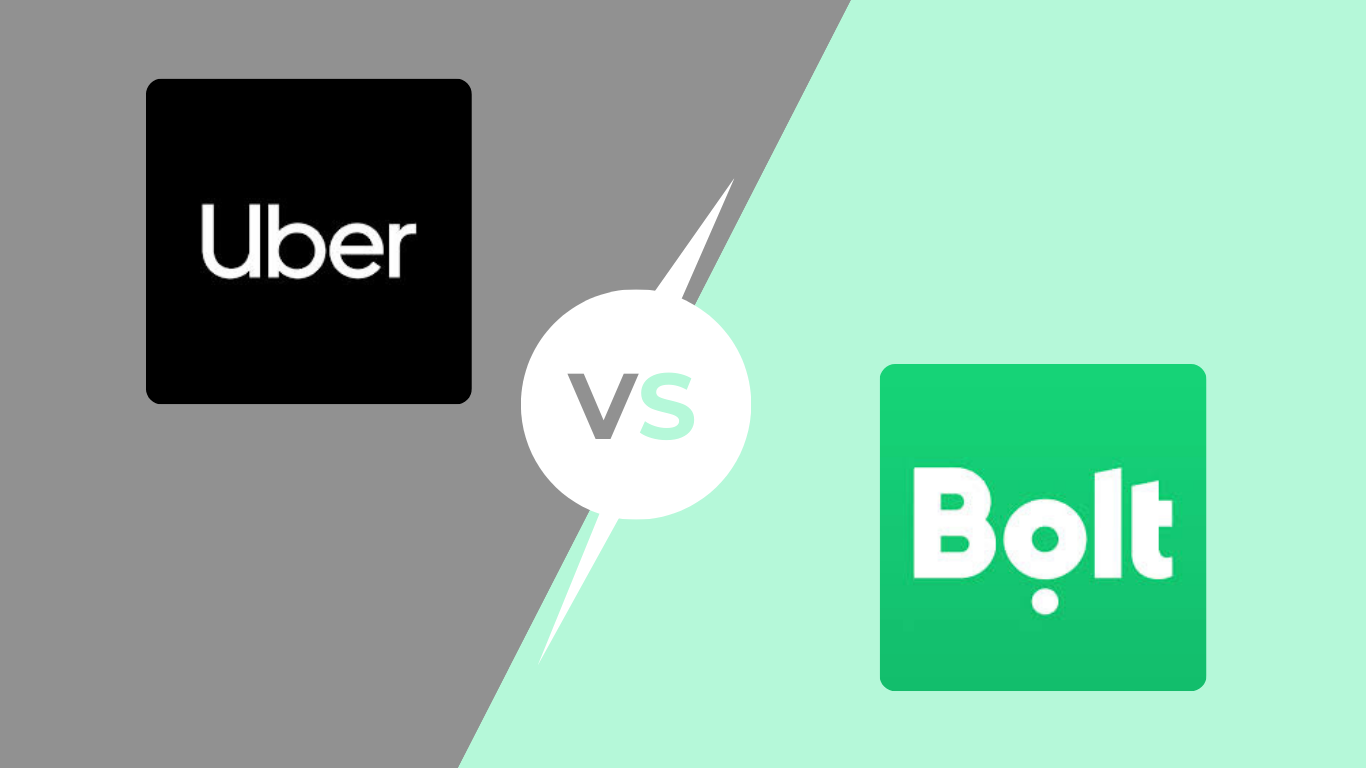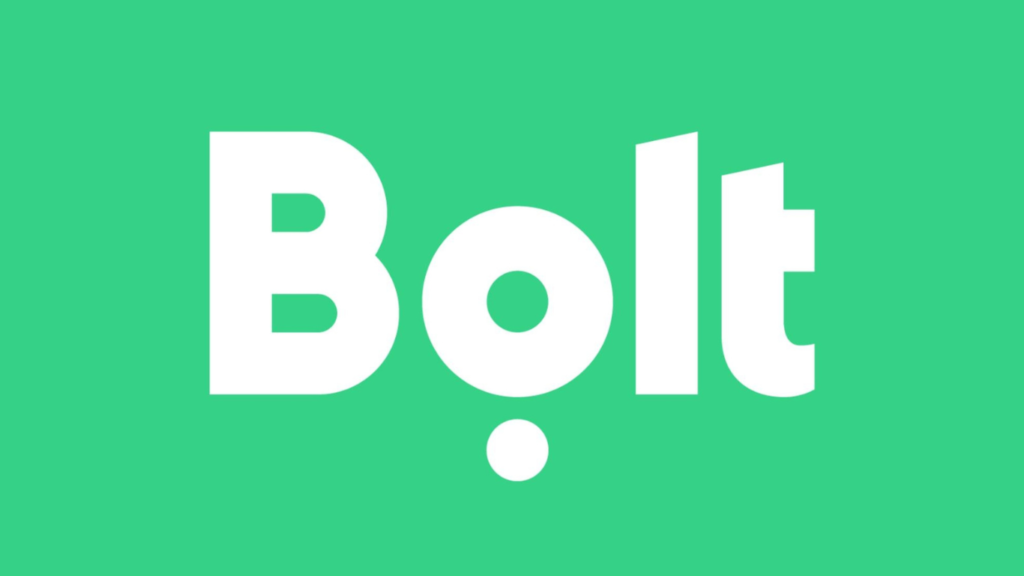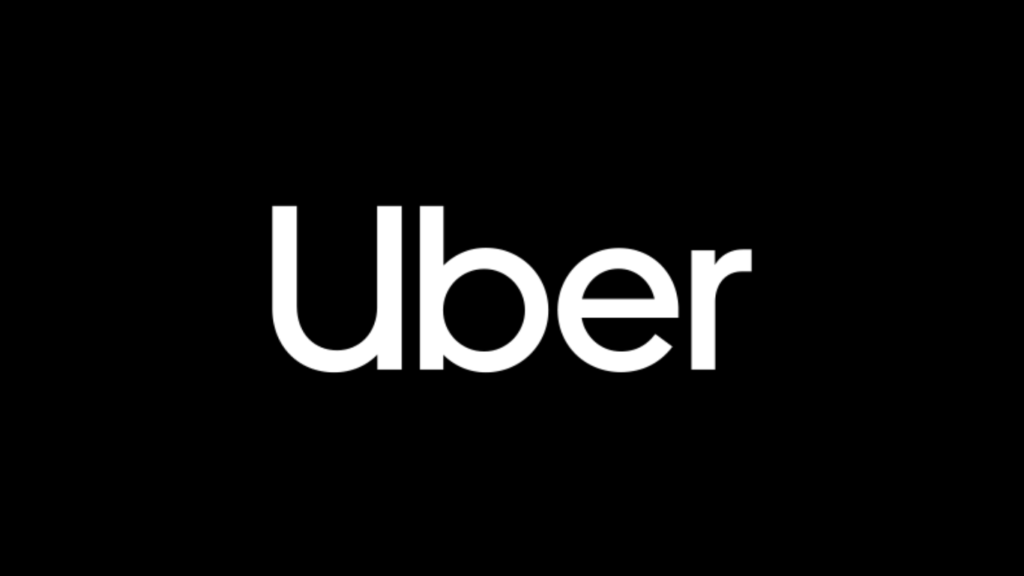Business
Is Bolt Cheaper Than Uber? Comparing Ride-Hailing Prices and Services

In today’s fast-paced world, ride-hailing services have become a significant part of our daily commute. With numerous options available, choosing the right service can be challenging. This article aims to compare two major players in the ride-hailing industry: Bolt and Uber. We’ll explore their pricing structures and service quality to help you decide.
Selecting the right service is crucial not only for your comfort but also for your wallet. Whether you’re going to work, heading to the airport, or exploring a new city, the right service can make all the difference. Let’s find and see how Bolt and Uber stack up against each other.
Overview of Bolt

Brief History
Bolt, formerly known as Taxify, was founded in 2013 by Markus Villig in Tallinn, Estonia. Initially focused on the European market, Bolt has rapidly expanded globally. The company rebranded to Bolt in 2019 to signify its broader scope beyond taxi services.
Service Area Coverage
Bolt operates in over 40 countries and 200 cities worldwide. Its primary markets include Europe, Africa, and recently, Asia. The company continues to grow, aiming to provide affordable and reliable transportation options to more regions.
Unique Selling Points
Bolt has several unique selling points that differentiate it from competitors:
- Eco-friendly Options: Bolt offers electric scooters and bikes in addition to its ride-hailing services, promoting sustainable urban transport.
- Loyalty Programs: Bolt frequently offers loyalty rewards and discounts to regular users, making it an attractive option for budget-conscious commuters.
- Local Market Focus: Bolt often tailors its services to meet the needs of the local market, which can result in better pricing and service quality.
Overview of Uber

Brief History
Uber was founded in 2009 by Garrett Camp and Travis Kalanick in San Francisco, California. Initially launched as a luxury black car service, Uber quickly evolved into a global ride-hailing giant. It revolutionized the transportation industry by leveraging technology to connect riders with drivers seamlessly.
Service Area Coverage
Uber operates in over 69 countries and 900 metropolitan areas worldwide. Its extensive reach ensures that users can find an Uber ride in most urban and even some rural areas across the globe.
Unique Selling Points
Uber stands out in several ways:
- Premium Ride Options: Uber offers various ride categories, including UberX, UberXL, UberBLACK, and UberLUX, catering to different preferences and budgets.
- Integrated App Features: Uber’s app includes features like fare splitting, real-time tracking, and in-app emergency assistance, enhancing user convenience and safety.
- Global Presence: Uber’s widespread availability makes it a reliable choice for international travelers.
Pricing Comparison
Base Fares and Rate Structures
Bolt Pricing Details
Bolt’s pricing structure is straightforward:
- Initial Fare: €2.00
- Per Kilometer/Mile Rate: €0.50 per kilometer
- Per Minute Rate: €0.15 per minute
Uber Pricing Details
Uber’s pricing varies slightly by region, but here’s a general overview:
- Initial Fare: €2.50
- Per Kilometer/Mile Rate: €0.60 per kilometer
- Per Minute Rate: €0.20 per minute
Surge Pricing Mechanisms
Both Bolt and Uber implement surge pricing to manage demand and supply during peak hours. Surge pricing increases the fare during high-demand periods or in areas with limited driver availability.
- Bolt Surge Pricing: Typically, Bolt’s surge multipliers range from 1.5x to 2x the normal fare during peak times.
- Uber Surge Pricing: Uber’s surge pricing can be more dynamic, with multipliers sometimes exceeding 2x during extremely high demand periods.
Uber’s surge pricing can be visualized in their app with a heat map, indicating high-demand areas where higher fares apply. Bolt also notifies users of surge pricing within the app but may not provide as detailed a visual representation.
Additional Charges
Both Bolt and Uber have additional fees that may apply:
- Cancellation Fees: Both services charge a fee if a ride is canceled after a certain period (typically 2-5 minutes).
- Waiting Time Charges: If a driver waits for a passenger beyond a set grace period, both Bolt and Uber impose waiting time charges.
- Extra Stops: Additional fees may apply for extra stops during a ride.
Example Fare Calculations
To provide a clearer comparison, let’s look at a hypothetical 10-kilometer journey with a 15-minute duration during non-peak hours:
- Bolt Fare Calculation:
- Initial Fare: €2.00
- Distance Charge: 10 km x €0.50 = €5.00
- Time Charge: 15 min x €0.15 = €2.25
- Total: €9.25
- Uber Fare Calculation:
- Initial Fare: €2.50
- Distance Charge: 10 km x €0.60 = €6.00
- Time Charge: 15 min x €0.20 = €3.00
- Total: €11.50
From this example, Bolt appears to be cheaper than Uber for the same journey.
Service Comparison
Availability and Accessibility
Both Bolt and Uber have strong presences in urban areas, though their availability can differ in rural regions:
- Bolt: Primarily focused on urban centers, with limited rural coverage.
- Uber: Due to its larger scale, Uber tends to have better coverage in suburban and some rural areas.
Vehicle Options and Quality
Both platforms offer a range of vehicle options to cater to different needs:
- Bolt:
- Bolt: Standard cars for regular rides.
- Bolt Comfort: Higher-end vehicles for a more comfortable ride.
- Bolt XL: Larger vehicles for groups.
- Uber:
- UberX: Standard, affordable rides.
- UberXL: Larger vehicles for groups or extra luggage.
- UberBLACK: Premium rides with luxury vehicles.
- UberLUX: High-end luxury vehicles for the ultimate experience.
Driver Ratings and Safety Measures
Both Bolt and Uber prioritize passenger safety and maintain robust rating and safety systems:
- Bolt:
- Driver Ratings: Passengers can rate drivers after each trip.
- Background Checks: Comprehensive background checks for all drivers.
- In-App Safety Features: Emergency button and trip-sharing options.
- Uber:
- Driver Ratings: Detailed driver profiles and ratings are visible to passengers.
- Background Checks: Rigorous background screening for drivers.
- In-App Safety Features: Emergency assistance, live tracking, and trusted contacts.
Customer Support
Effective customer support is essential for resolving issues promptly. Here’s how Bolt and Uber compare:
- Bolt:
- In-App Support: Help section within the app for quick issue resolution.
- Email Support: Dedicated email support for more complex queries.
- Uber:
- In-App Support: Comprehensive help section with FAQs and instant support options.
- Phone Support: 24/7 phone support in some regions.
- Social Media: Active support through social media channels.
User Experience
App Usability
The ease of using the app significantly impacts the overall user experience:
- Bolt:
- Simple and intuitive interface.
- Quick access to key features like
Conclusion
To determine whether Bolt is cheaper than Uber, several factors must be taken into account. Both services have carved out a niche within the ride-hailing market and offer distinct advantages. Additionally, you should not overlook additional features offered by each platform, even though cost is an important factor in your decision-making process. Bolt, for example, has gained popularity for its user-friendly app interface and focus on driver welfare.
On the other hand, Uber offers a wide range of ride options from economy to luxury. Reviews indicate that some passengers prefer Uber’s extensive fleet for its reliability, while others prefer Bolt’s competitive rates and incentives.

Business
Why Is It So Important To Get An Audience With The King In Path Of Exile 2?
For players familiar with POE 2, they all know that even if they reach the end of the game, it does not mean that they have achieved the final victory. There is still a bigger challenge waiting for players after the end, that is the pinnacle boss. For players, the most important boss is Ritual pinnacle boss – King in Mists. Players can not only earn POE 2 Divine Orbs by grinding it, but also get valuable rare loot.
However, this is very challenging because players need to obtain a unique rare item – An Audience With The King, which is not only very difficult to obtain, but also the process of obtaining it is extremely boring, requiring players to invest a lot of time and effort. Players can obtain it through Ritual Altars or trade with other players.
Ritual Altar
In fact, An Audience With The King is a reward in Rituals, and the probability of appearing is also very small. Players can obtain it by trading tribute. Generally speaking, it often appears on low-tier maps, and if An Audience With The King does not appear, players can re-roll the reward pool, but this requires 1000 Tributes. What’s more important to note is that in order to get it, 2500-7000 Tributes are required, which is really a huge challenge for players.
In addition, players should be reminded not to spend too many favors before completing all rituals on the map and re-rolling the reward pool. In most cases, players can delay items by using Defer button, which ensures that they will appear in the next ritual node. Moreover, it is only a small part of the total price of the item, and the delayed payment will only be made when the item appears. Although it may not appear in the next ritual, it will definitely appear in the end.
The value of the item is also positively correlated with the time required to return. The higher the value, the longer it takes to return. As the most valuable item in the reward pool, players need to have enough patience and time to get An Audience With The King.
Generally speaking, delaying an item once is not enough. When An Audience with the King reappears, the player must again hold off until its price is no longer a burden to the player, so that they can acquire it through trade. Players must clear ten ritual maps to hone its base cost.
Of course, if players encounter An Audience With The King, which is very expensive and they do not have enough grace to postpone it, please give up immediately, otherwise all efforts will be in vain.
Trade Method
In fact, the easiest way to get An Audience With The King is to trade. If players get extra currency through various methods, you can trade directly with the official website or Currency Exchange, but in order to prevent scams, it is recommended that players use Currency Exchange.
Items in POE 2 generally do not have a fixed price because it is subject to market fluctuations, but as a rule of thumb, An Audience With The King usually hovers around 5-10 Divine Orbs, and players can measure it themselves based on this price.
How To Farm An Audience With The King?
The most important thing to farm An Audience With The King is to get Ritual Precursor Tablets, which are a special variant that can only be dropped from Ritual Altar-spawned monsters. If they are placed in a cleared Tower, the regular map nodes around the tower will become ritual map nodes.
Players can get Ritual Precursor Tablets from trading sites or trading channels. One of its good modifiers is that the altar in the map allows additional re-rolls of favors.
Essentially, An Audience With The King is not a dropped item, but a random spawn in the store. Because it is one of the few items that can benefit from the increased attributes of the dropped item rarity, it is different from other things.
Use Or Sell?
As an item that is very expensive in itself, if players do not have enough confidence and a strong build to defeat King in Mists, they can choose to sell An Audience With The King, which will not only get extra POE 2 Currency, but also will not waste the value of the item itself. Many players have successfully become rich in this way.
Of course, using it is a better choice, because if the player successfully defeats the boss, he will get the most valuable loot in the game-Ingenuity Utility Belt and From Nothing Diamond.
Although it is difficult to get An Audience With The King, as long as players carefully observe the situation in the game and make the right decisions, I believe they can get the items they want and win in the end!
Business
Exploring the Rejuvenating Power of Wellness and Health Retreats

In today’s fast-paced world, where stress and burnout seem unavoidable, wellness and health retreats offer a peaceful escape. These sanctuaries of calm and well-being provide not just rest, but an opportunity to rejuvenate mentally, physically, and emotionally. Imagine waking up to the serene sounds of nature, engaging in mindful yoga, and savoring nutritious meals designed to enhance your body’s natural vitality. With their rising popularity, more people are seeking the healing benefits that come with wellness retreats, which can be especially rejuvenating in places like Florida.
The Growth of Wellness Retreats in Florida
Florida, with its natural beauty and warm climate, has long been a popular destination for those seeking rest and relaxation. The state offers a diverse range of wellness and health retreats that cater to different needs. From beachfront resorts with yoga practices to holistic healing centers nestled in nature, Florida has something for everyone. Florida’s 2024 Legalization Vote has further shaped the wellness landscape in the state, providing a fresh avenue for people to explore health and wellness through more natural, alternative methods. As the state moves toward the legalization of certain wellness practices, retreats are becoming even more innovative, incorporating the latest treatments in wellness into their offerings.
The tropical allure of Florida plays a significant role in its attraction as a wellness destination. Imagine spending your mornings practicing yoga on a quiet beach, the sound of the ocean waves soothing your soul, and the endless sunshine providing a boost to your mood. Such retreats are designed to foster mental clarity, emotional balance, and physical well-being. The combination of holistic practices, healing environments, and nutrient-dense foods creates the perfect backdrop for individuals seeking a break from the stresses of everyday life.
Transformative Benefits of Wellness Retreats
Whether it’s through yoga, meditation, or nutrition-focused programs, wellness retreats provide a variety of ways to nourish your mind and body. Many retreats incorporate spa services, detoxification programs, and fitness classes, all with the aim of restoring your body’s natural balance. Participants often return home feeling reinvigorated, with a renewed sense of peace and vitality.
One of the most significant benefits of wellness retreats is the opportunity to disconnect from the digital world. In our modern lives, where we’re constantly connected to our phones, emails, and social media, it’s easy to feel overwhelmed. Wellness retreats offer the chance to unplug from the distractions of technology and reconnect with nature. In a world that’s becoming increasingly fast-paced, Florida’s 2024 Legalization Vote may just lead to even more therapeutic options for detoxing from digital overload, bringing people back to their roots.
Wellness Retreats for Mental Health
Mental health is one of the core pillars of wellness. In recent years, retreats focusing on emotional healing and mental clarity have gained immense popularity. Wellness centers in Florida offer specialized programs to help guests deal with stress, anxiety, and other mental health challenges. These retreats use mindfulness techniques, such as guided meditation, breathwork, and deep relaxation exercises, to help individuals manage their mental well-being.
The calming surroundings of Florida’s pristine beaches and lush landscapes provide the perfect environment for people to reset their mental state. A change of scenery combined with focused mental health practices can allow guests to detach from the daily grind and re-establish emotional equilibrium. Florida’s 2024 Legalization Vote may play an instrumental role in expanding mental health therapies, offering new, research-backed modalities that integrate seamlessly into the wellness and health retreat experience.
The Physical Rejuvenation Journey
While mental wellness is an essential aspect of retreats, physical rejuvenation plays an equally vital role. Many wellness retreats in Florida focus on improving fitness and physical health through a variety of fitness programs. These may include yoga, Pilates, strength training, or even outdoor activities like hiking or kayaking. Fitness-oriented retreats are ideal for individuals looking to improve their overall health while enjoying the natural beauty of Florida.
Florida’s idyllic weather makes outdoor activities a core part of many wellness retreats, whether you’re practicing yoga on the beach or taking part in a hiking excursion through the Everglades. Engaging in physical activities in such beautiful environments helps boost serotonin and dopamine, which are the body’s natural “feel-good” chemicals. Moreover, eating healthy, locally-sourced foods tailored to individual dietary needs enhances the physical benefits of the retreat. Whether it’s detox programs or customized fitness regimens, Florida’s retreats offer various ways to get fit while relaxing in paradise.
Holistic Healing: Embracing a Mind-Body Connection
Holistic healing is at the heart of most wellness retreats, and Florida offers some of the most innovative holistic programs in the country. These programs emphasize the mind-body connection, utilizing a range of treatments such as massage therapy, acupuncture, and aromatherapy. Holistic healing encourages individuals to take care of their emotional, mental, and spiritual well-being, often incorporating mindfulness practices with physical treatments.
Many Florida retreats also include workshops and talks on how to incorporate holistic practices into everyday life, making the benefits last long after the retreat ends. The state’s welcoming environment and emphasis on overall well-being make it an ideal location for holistic health retreats. Whether you’re interested in spiritual healing, acupuncture, or energy work, Florida has an abundance of retreat options that cater to your specific needs. Furthermore, Florida’s 2024 Legalization Vote could signal an influx of even more alternative wellness treatments in the near future, allowing retreat centers to offer an even broader range of services.
A Lasting Impact
The transformative nature of wellness retreats often leaves guests with life-changing results. Many individuals report long-term benefits, including reduced stress levels, improved sleep, better relationships, and a more balanced perspective on life. The deep sense of relaxation and healing achieved during a retreat becomes a touchstone for future personal growth. In addition, the commitment to living a more mindful, healthy life after the retreat continues to benefit participants for years to come.
By addressing the physical, emotional, and spiritual aspects of health, wellness retreats empower people to create lasting changes in their lives. Guests often find themselves adopting more mindful eating habits, incorporating fitness routines into their daily lives, and cultivating emotional resilience long after they’ve left the retreat. With the natural beauty of Florida as a backdrop, these retreats help individuals connect with their higher selves and set new intentions for their personal wellness journey.
When it comes to choosing a wellness retreat, Florida stands out as one of the top destinations for those seeking a holistic escape. The combination of pristine landscapes, warm weather, and a growing emphasis on health and wellness makes the state an ideal place to unwind and rejuvenate. With Florida’s 2024 Legalization Vote potentially ushering in new wellness practices, the future of health retreats in Florida looks brighter than ever. Whether you’re interested in mental clarity, physical rejuvenation, or holistic healing, Florida’s wellness retreats offer something for everyone looking to enhance their well-being.
FAQs
1. What types of wellness retreats are available in Florida? Florida offers a wide variety of wellness retreats, including those focused on yoga, fitness, holistic healing, detoxification, and mental health. There are options for every type of wellness journey, from luxury resorts to eco-friendly retreats.
2. How can wellness retreats benefit my mental health? Wellness retreats can help reduce stress and anxiety through mindfulness techniques such as meditation and breathwork. The tranquil environment and focus on mental well-being allow guests to disconnect from daily stressors and reset their emotional health.
3. Are wellness retreats in Florida all-inclusive? Many wellness retreats in Florida offer all-inclusive packages, which may include meals, accommodations, spa treatments, and wellness activities. Be sure to check the specifics of each retreat to understand what is included in the package.
4. What are the benefits of choosing Florida for a wellness retreat? Florida offers a unique combination of natural beauty, warm weather, and diverse wellness practices. Whether you’re looking for a beachside retreat or a holistic healing center in the heart of nature, Florida provides the perfect environment for relaxation and rejuvenation.
5. Will Florida’s 2024 Legalization Vote affect wellness retreats? Yes, the potential legalization of certain wellness practices in Florida could lead to more innovative and diverse health services offered at retreats, such as alternative therapies and treatments. This will enhance the wellness experience for all visitors to the state.
Business
Top Security Camera Systems for Small Businesses

Every small business must prioritize security. The fitting surveillance system is a simple yet effective means to discourage crime. It watches after your people and assets at the same time. A professionally selected security camera system improves the safety of the business you run. It assures you that your business is under watchful eyes, even if you are away. Various excellent options serve distinct needs. This guide presents the best security camera systems for small enterprises. Each has unique perks, such as advanced features, easy use, and scalable options. Careful choice can help you choose a system exactly fit for the business’s needs. It guarantees complete peace of mind and security.
Ring Stick Up Cam
Businesses looking for installation flexibility would find great value in the Ring Stick-Up Cam. Its simple construction lets you almost place it anywhere—inside or outside. Clear footage from the 1080p HD video means that you won’t miss any detail. Two-way communication allows you to interact with people around the camera, therefore enhancing security.
Its motion sensors let you know about any strange activity. This camera also fits other Ring products, therefore establishing a consistent security mechanism. Whether you own a café or a small business, the Ring Stick Up Cam provides consistent, easy-to-use, reasonably priced security.
GW Security Camera Systems: High-Performance Solutions for Small Businesses
High-end security camera systems meant to provide small companies with dependable monitoring and sophisticated security capabilities are offered by GW Security. GW Security cameras guarantee crystal-clear video and accurate alerts by means of its innovative 4K Ultra HD resolution and artificial intelligence-powered motion detection, therefore lowering false alerts.
Their solutions let companies keep real-time monitoring of their premises by including remote access via mobile applications, night vision capabilities, and weatherproof outside cameras. Furthermore, by offering NVR (Network Video Recorder) systems with high storage capacity, GW Security guarantees continuous recording free from data loss.
Small companies looking for a professional-grade security solution without the high expenses of enterprise-level systems will find GW Security to be a great alternative thanks to scalable options and easy installation.
Arlo Pro 4
Imagine a camera system that offers freedom without skimping on quality – that’s Arlo Pro 4 for you. Its completely wireless setup allows you to install it anywhere without being troubled by cords. Even more, its 2K video resolution promises sharp and clear recordings. Using the built-in two-way audio feature, have a conversation with your guests or any invaders; it’s like having virtual guard duty!
The motion detection notifications will send straight to your phone real-time information. Plus, the night vision feature ensures your space stays monitored even when the lights go out. For those after flexibility paired with excellent performance, look no further than the Arlo Pro 4.
Amcrest 4MP Outdoor Security Camera
Opt for the Amcrest 4MP Outdoor Security Camera if you require a strong and weatherproof solution. It’s built to brave the outdoors while delivering impressive clarity with its 4MP resolution. Even in pitch darkness, its robust night vision guarantees all activity is overseen up to a stunning distance.
The capability to pan, tilt, and zoom means you can alter your viewing angle for broader coverage and more detailed perspectives. Footage storage poses no issue as this camera offers flexibility with local and cloud storage possibilities. The enduring design, coupled with superior features, makes the Amcrest 4MP an excellent option for businesses wanting solid outdoor surveillance.
Blink Outdoor
Looking for a good outdoor camera that doesn’t hurt your wallet? Consider the Blink Outdoor! This weatherproof cam perfectly secures your outdoor spaces. Its wireless design makes the setup super easy and flexible. Even at night, its infrared night vision ensures you see clearly in the dark. Saving battery life isn’t a problem either, thanks to its amazing battery efficiency.
With remote access via the Blink app, you can monitor your property anywhere. If you’re after decent quality surveillance that won’t break the bank, the Blink Outdoor is a fantastic choice for added peace of mind outside your business.
Conclusion
Selecting the appropriate camera system improves your business security rather noticeably. Ideal choices like Ring Stick Up Cam and Blink Outdoor make setup and use easy while offering great protection. For those desiring sharp images, the Amcrest 4MP Camera is excellent. It ensures strong outdoor surveillance. If flexibility is your need, the Arlo Pro 4 fits perfectly. On the other hand, the Lorex NVR System serves large coverage well. Each of these systems has distinct benefits catering to varied requirements. Selecting what suits you best delivers reliable security that guards your assets around the clock and offers tranquil mind assurance.
-

 Celebrity7 months ago
Celebrity7 months agoBailey Zimmerman’s Net Worth in 2024: A Look at His Earnings
-

 Celebrity8 months ago
Celebrity8 months agoWho Is Charlotte Tilbury: The Visionary Behind a Global Beauty Empire
-

 Fashion4 months ago
Fashion4 months agoHow to Choose the Right Shade of Green for Your Skin Tone
-

 Celebrity8 months ago
Celebrity8 months agoJohn Summit Net Worth: A Rising Star in the Music Industry
-

 Celebrity6 months ago
Celebrity6 months agoExploring the Life of Andrew Shingange: Trevor Noah’s Brother and an Advocate for Change
-

 Celebrity6 months ago
Celebrity6 months agoCaseOh’s Financial Success in 2024: Net Worth, Income Streams & More
-

 Sports5 months ago
Sports5 months agoWho Is Tyla Ochoa? All About Sam Hartman’s Girlfriend – Family, Career, and Personal Life
-

 Celebrity8 months ago
Celebrity8 months agoThe Rise of Ashley Flowers: A Deep Dive into Her Net Worth


Pingback: Why UK Students Are Turning to Paid Assignment Services? - Business Radar - Startup News, Business Insights, Tech Trends, Sports, and More